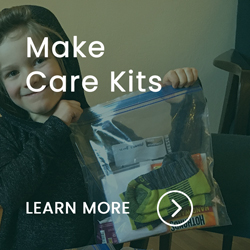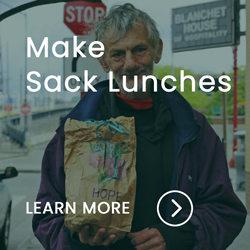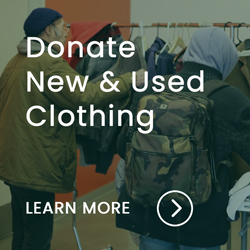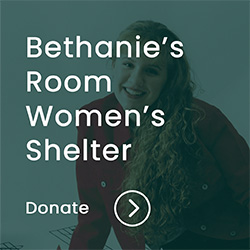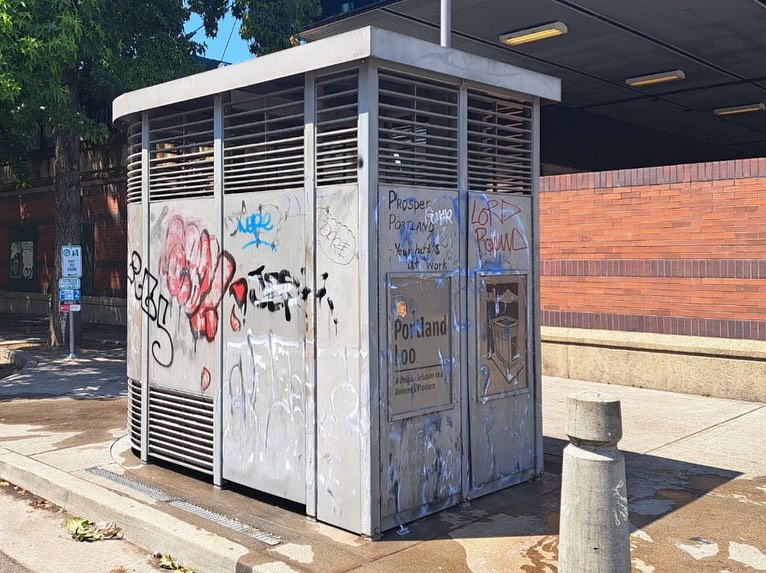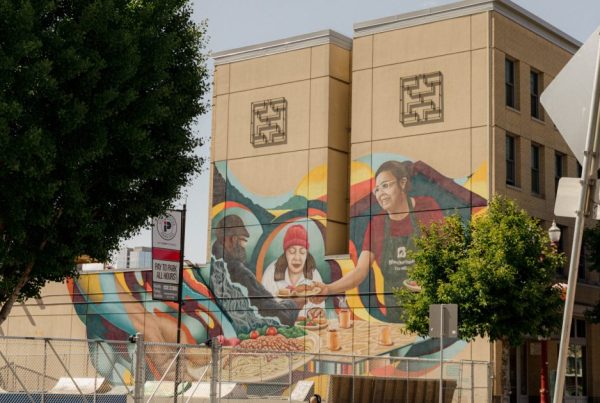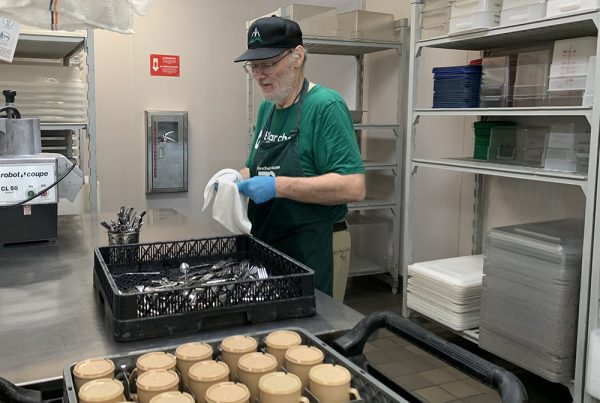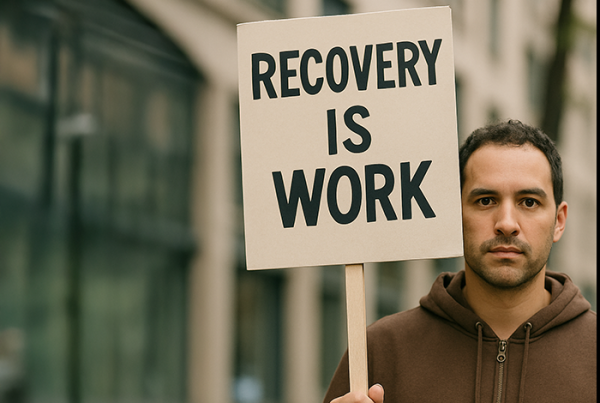Accessing public bathrooms and showers is extremely difficult for people who are houseless, experiencing homelessness or housing insecurity.
By Thomas Nguyen
How many times a day do you use the bathroom? How far do you have to go to access a bathroom? Are the bathrooms you use safe and comfortable?
To most of us, these questions aren’t ones that we even consider during our daily lives. The answers are likewise not that relevant to our comfort and livelihoods. But, for an important section of our community, these questions hang over them and make daily life more difficult. For people who don’t have housing (aka homeless or houseless), bathroom access is something that can require traveling miles on foot, especially for women or people with disabilities. People experiencing homelessness can lose out on opportunities because they must prioritize satisfying a basic need. And, lack of hygiene is so degrading to self-image. Poor hygiene due to lack of access to it can be a stressful aspect of a difficult situation that already has so many stressors.
For many in our community, using a bathroom is a privilege, not a right.
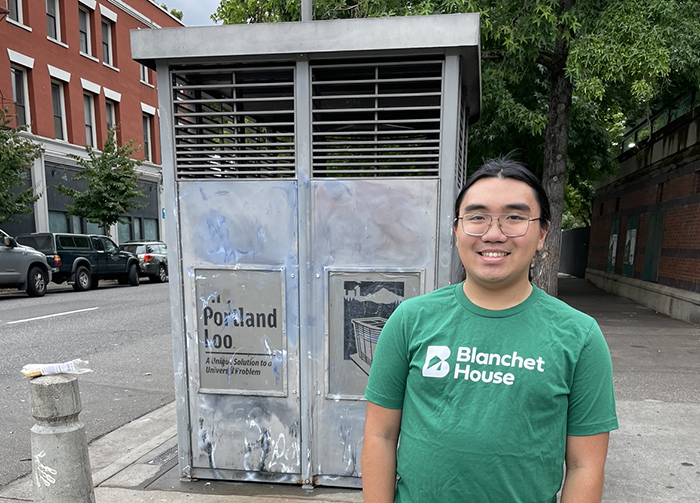
Thomas Nguyen stands near a Portland Loo, maintained by the City of Portland.
Where Can You Go?
One of the major struggles unhoused people face is accessing safe, reliable places to tend to their personal hygiene. When you don’t have access to a home with a bathroom to relieve yourself, your options dry up quickly. Private businesses, like restaurants and grocery stores, often bar their bathrooms from non-paying customers and heavily discriminate against people perceived to be homeless. City-maintained public bathrooms are the only option left and are often damaged, infrequently serviced, and misused. These types of public restrooms are few and far between and most cities don’t even offer them.
In Portland, there are only eight public porta potties, and they are spread throughout the city. In Old Town, where many houseless people live, there are only two bathrooms. This number is down from the more than 100 porta potties set out at the beginning of the COVID pandemic. Currently, downtown Portland only has 13 public bathrooms available. Also known as Portland Loos, all of them suffer from unpredictable cleaning and closures.
For many people, the only bathroom available is a bush, an empty alley, or even the sidewalk.
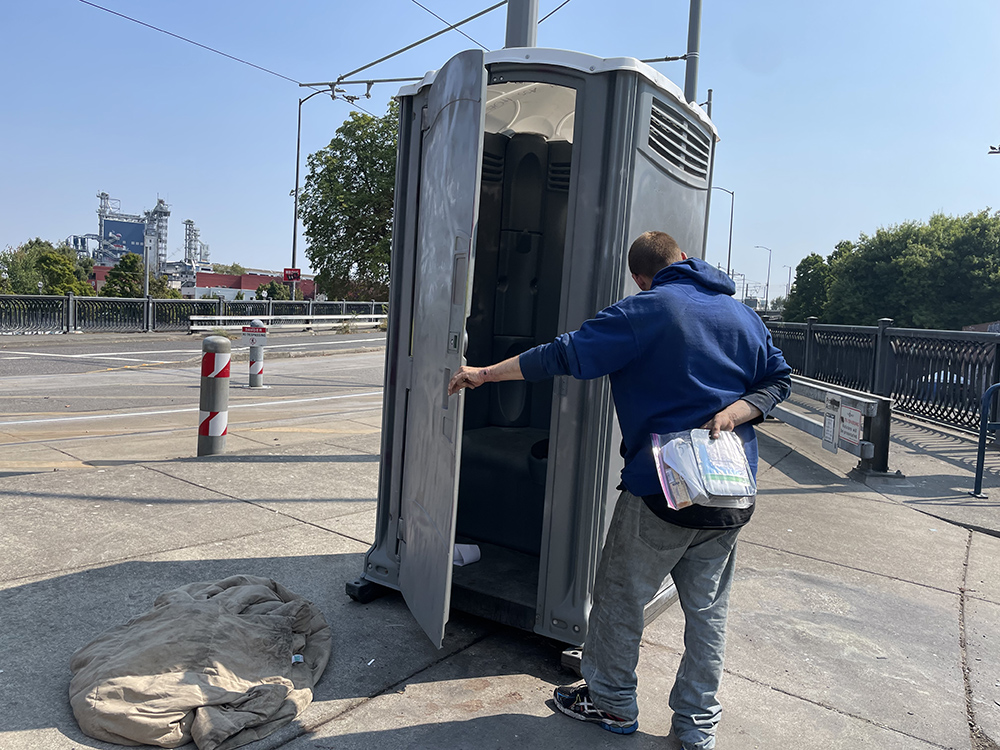
A houseless man contemplates using a porta potty in Old Town, Portland.
The Public Bathroom Catch
The discrimination unhoused people face from business owners is not an isolated phenomenon. It is reflective of a common preconception that our society has about those who are houseless. The predominant image of a homeless person is someone who has a dirty face, wears worn-down clothes and lives on an economically distressed street. This stereotype drives us to push them away from our lives, and our businesses. Yet the restrooms that we prohibit unhoused people from using are also the ones that would help alleviate this preconception!
This is the catch that many unhoused individuals face every day–you can’t use a bathroom because people think you are dirty, yet you can’t clean yourself without a bathroom. Not only is the negative public perception of houseless people endlessly perpetuated in this way, but their self-image is also negatively affected.
Not being able to use a bathroom is dehumanizing. Forcing already vulnerable people to travel far on foot or squat behind a bush sends a message that society places you below people who have housing. Our lack of safe, comfortable, and reliable public bathrooms heavily contributes to the suffering that homeless people face every day.
What Can We Do to Provide More Public Bathrooms for Houseless People
Lack of access to public hygiene is a major component of the homelessness crisis we currently face. This basic human need is severely under-discussed. The situation on the ground is often misunderstood and neglected by the media, public leaders, and social service providers. Part of resolving the hygiene disparities in our communities would be to simply give the issue more attention and effort. Local businesses and the city need to work together to rethink how we provide access to bathrooms and showers for the unhoused. This looks not only like improving and expanding existing public restrooms but also reconsidering how we provide restrooms throughout our communities. We need to discuss how to share the responsibility of restrooms equally. Our current model of privately provided public restrooms can only get us so far.
Beyond simply providing more bathrooms, we should look at how to ensure that bathrooms are accessible to all users. This is a difficult task to envision, as there are so many different identities that people hold that can influence how they use the bathroom. For many women, restrooms in isolated areas can feel unsafe to use. A restroom that is not ADA-accessible serves no purpose for individuals who rely on wheelchairs. For low-income groups, bathrooms that are not within walking distance may require paid transportation which makes them unavailable.
Thinking inclusively about what people need to access a bathroom requires us to consider beyond just a toilet and a sink. Instead, we need to provide public toilets that dignify all of their users and protect one of their fundamental rights.
Having access to a restroom should not be something that is a stressor to people. Convenient and ample public restrooms should be something we celebrate, a testament to our prioritization of basic human needs. We can show houseless people that they are part of our community and we want to support their needs and empower them by providing more public bathrooms. Our approach to the homelessness crisis, in all aspects, should work to uplift our community members, not degrade them.
Thomas Nguyen is a student at the University of Oregon. In 2023, he interned full-time with Blanchet House helping to provide services to people experiencing homelessness, housing insecurity, and poverty.






